Terminology
We want to give you the best experience possible, but not everybody can understand our jargon. So, we compiled this list of common terms and definitions to help bridge that gap!
Start Closed
Aluminum Wiring
* While aluminum wire is safe, connecting it to copper wire and copper-rated receptacles causes problems *
Aluminum and copper have different properties: they two expand and contract differently when under electrical load. This can cause the connections to become loose.
Loose connections can result in: sparking, arcing, oxidation, heat build up and, finally, the possibility of a fire through the ignition of surrounding combustibles such as the insulation on the wire, wall insulation, wallpaper in the area of the electrical box, etc.
Symptoms include: warm cover plates or discolouration of switches or receptacles, flickering lights, or the smell of hot plastic insulation.
Aluminum was a common material for wiring houses built in the 1960s, 1970s and early 1980s. Home improvements over the years added into the picture copper wire, and receptacles meant for copper.
Aluminum wire is still occasionally used today but for heavy power uses rather than general residential use. Copper wire is now used in residential homes.
*** Many insurance companies will not provide or renew insurance coverage on properties with aluminum on copper unless the wiring is inspected, and repaired or replaced as necessary.
The most common solution is called Tailing (or Pig-tailing), which involves re-making electrical connections using special marrette connectors which are able to blend aluminum and copper.
Ballast
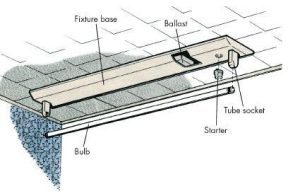
A device that provides the necessary electrical circuit conditions to run a fluorescent, LED or Metal Halide light fixture
Breaker
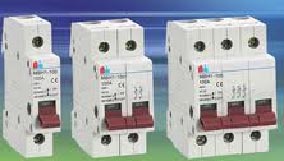
An automatic device that disconnects power to a circuit when current or heat exceeds a certain level for a certain amount of time. Unlike a fuse, which operates once and then must be replaced, a circuit breaker can be reset (either manually or automatically) to resume normal operation.
Car Chargers
ELECTRIC CAR CHARGER – also called EV charging station, electric recharging point, charging point, charge point, electronic charging station (ECS), and electric vehicle supply equipment (EVSE), is an element in an infrastructure that supplies electric energy for the recharging of plug-in electric vehicles—including electric cars, neighborhood electric vehicles and plug-in hybrids.
Charging stations provide a range of heavy duty or special connectors that conform to the variety of standards. For common DC rapid charging, multi-standard chargers equipped with two or three of the Combined Charging System (CCS), CHAdeMO, and AC fast charging has become the de facto market standard in many regions.
Circuit
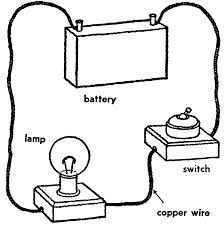
A conductive path over which an electric charge may flow.
The path an electric current travels from where it enters your house, through a panel, across wires, into an electrical device, then back to its source.
Conduit
A channel for holding and protecting conductors and cables, made of metal or an insulating material, usually circular in cross section like a pipe. Also referred to as Duct.
Dedicated Circuit
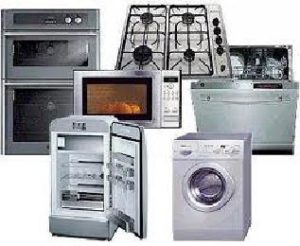
A circuit/receptacle designated to serve a particular area, room, machine or appliance.
i.e.) Fridge, stove, microwave, dishwasher, freezer, washer, dryer, furnace, water heater, air conditioner, utility room
Fuse
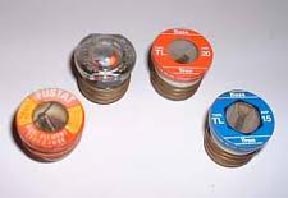
A conductive device that disconnects power to a circuit by melting apart when current or heat exceeds a certain level for a certain amount of time. It must be replaced in order to reconnect the circuit.
See “Breaker”
Fuse Box / Panel Box / Breaker Box
The large metal box containing breakers or fuses for all the electrical circuits in your home. The “main panel” or “service panel” receives its power from the hydro company.
There can be subpanels in a home, fed from the main panel and containing some of the home’s circuit breakers.
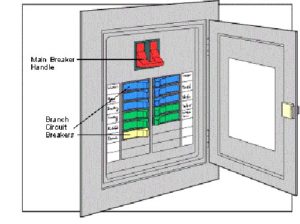
“Panel” can refer to either a breaker box or a fusebox. Some people still use the term “fusebox” to refer to a panel, but that term should only be used if you have fuses.
Ground
- An electrical term meaning to connect to the earth.
- A conducting connection, whether intentional or accidental by which an electric circuit, or equipment, is connected to the earth or some conducting body that serves in place of the earth.
Kitchen - Split
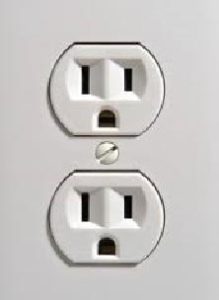
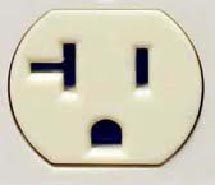
A normal-looking receptacle that contains two dedicated circuits. So you can, for example, use the toaster and the microwave at the same time without “blowing a fuse”.
Lights
There are four main types of lights: Fluorescent, Halogen, Incadescent, and LED.
(See below)
Lights - Fluorescent
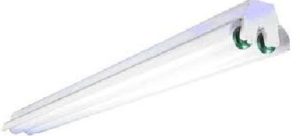
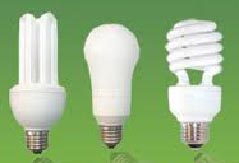
Fluorescent lights are tubular in design, with capped ends that feature two external pins each. The inside of the glass tube is powder-coated with phosphorous, and a small drop of mercury is also placed inside the bulb, which is filled with argon gas. An electrode at either end connects to electrical circuits.
When electricity flows through the electrodes it produces a charge that causes free electrons to travel through the gas-filled tube from one electrode to the other. This energy vaporizes a small portion of the mercury inside the tube and the result is ultraviolet (UV) light.
Fluorescent lights are far more complex in design than incandescent light bulbs, and more efficient. They use 75% less energy and generally last six to ten times longer than incandescent bulbs.
Lights - Halogen
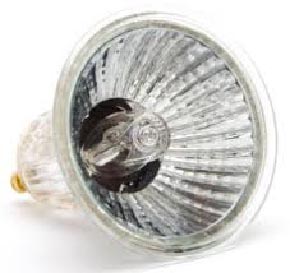
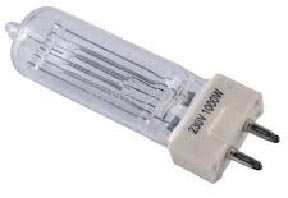
A halogen lamp, like an incandescent light, also uses a tungsten filament, but it is encased inside a much smaller quartz envelope. (Because the envelope is so close to the filament, it would melt if it were made from glass.) The gas inside the quartz envelope is also different — it is from the halogen group, which enables it to combine with tungsten vapor.
If the temperature is high enough, the halogen gas will combine with tungsten atoms as they evaporate and redeposit them on the filament.
This recycling process lets the filament last a lot longer (about 2000 hours). In addition, it is now possible to run the filament hotter, meaning you get more light per unit of energy. You still get a lot of heat, though; and because the quartz envelope is so close to the filament, it is extremely hot compared to a normal light bulb.
Halogen lights use only about 50% of the electricity needed to produce the same amount of light as an incandescent bulb. While they are not as energy efficient as compact fluorescent bulbs, their light “feels” warmer and more comfortable.
Lights - Incadescent
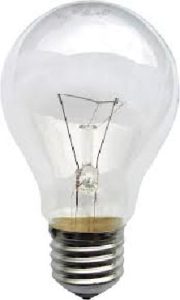
What most people think of as a “normal” light bulb. It is made up of a fairly large, thin, usually frosted glass envelope. Inside the glass is a gas such as argon and/or nitrogen.
At the center of the lamp is a tungsten filament. Electricity heats this filament up to about 4,500° F (2,500° C). Just like any hot metal, the tungsten gets “white hot” at that heat and emits a great deal of visible light in a process called incandescence. This is not very efficient because it produces far more heat than light. Since the purpose of a light bulb is to generate light, the heat is wasted energy.
An incandescent light bulb only lasts about 750 to 1,000 hours in normal use. This is because the tungsten in the filament evaporates and deposits on the glass. Eventually, a thin spot in the filament causes the filament to break, and the bulb “burns out.”
As of Jan. 1, 2014: 75- & 100-watt incandescent bulbs will be banned in Canada, followed by 40- & 60-watt versions on Dec. 31, 2014. However, the industry can continue to ship non-efficient bulbs, such as traditional incandescents, as long as they were manufactured before Jan. 1, 2014.
Lights - LED
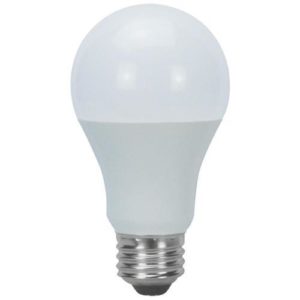
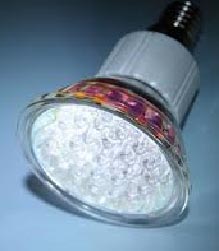
An LED, or Light Emitting Diode, is what’s called a “solid-state lighting” (SSL) technology. Instead of emitting light from a vacuum (as in an incandescent bulb) or a gas (as in a fluorescent), an SSL emits light from a piece of solid matter. In a traditional LED, that piece of matter is a semiconductor.
Stated simply, an LED produces light when excited electrons move around within its semiconductor structure.
A single light fixture stocked with a 60-watt incandescent bulb consumes about 525 kWh of electricity in a year; put an LED bulb in that light fixture, and the annual energy use is more like 65 kWh. The annual CO2 reduction is in the hundreds of pounds for a single lamp. Plus, you could go 20 years without having to change it.
Load
- The amount of electrical power required by connected electrical equipment.
- The total impedance of all the items in the output circuit.
Main (Breaker/Fuse)
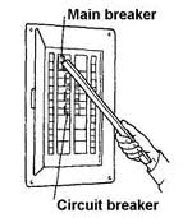
AKA the Main Breaker or Main Fuse
If you turn the Main switch or breaker off, it will shut down ALL power in the house.
Marrette

Twist-on wire connectors that are used to fasten two or more electrical conductors together.
Overload
An overload occurs when in normal operation a circuit has carried too much current for too long, so that the wires become hot and unsafe. The breaker or fuse for that circuit should trip and shut the power down.
Panel Upgrade
The replacement of an old, out-dated main electrical panel (usually a fusebox) by a new breaker panel. The meter is usually moved outside so your Utility provider can “read the meter” without entering your house.
This is often an insurance issue.
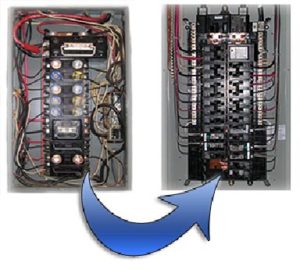
Receptacle
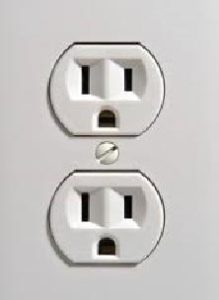
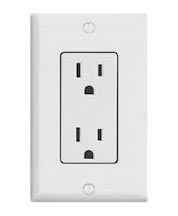
Sometimes referred to as an “outlet” or “plug”.
A socket device that serves as the outlet for lights or appliances to connect to a circuit by means of a cord with a “plug” on the end.
Receptacle AFCI (Arc Fault)
An arc–fault circuit interrupter (AFCI) also known as an arc–fault detection device (AFDD) is a circuit breaker that breaks the circuit when it detects an electric arc in the circuit it protects to prevent electrical fires.
Receptacle GFCI
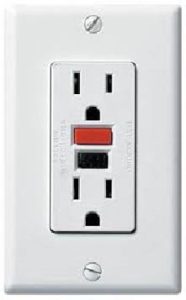
This outlet is designed to automatically shut off an electrical circuit if it detects current flowing along an unintended path, protecting you from electrical shock and fire.
Short Circuit
- A load that occurs when an ungrounded conductor comes into contact with another conductor or grounded object.
- An abnormal connection of relatively low impedance, whether made intentionally or by accident, between two points of different potential.
Switch - 3 Way
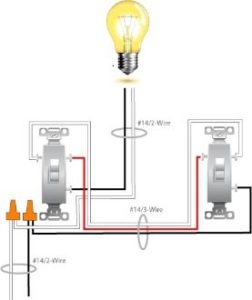
Two switches, both of which can turn on one device, usually a light. Most often seen at the bottom and top of stairwells or at opposite ends of a hallway.
Switch - Dimmer
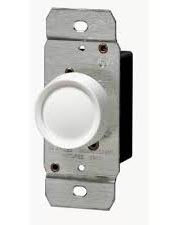
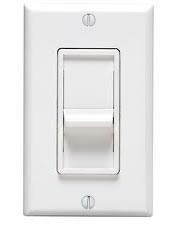
Dims or brightens the level of the light it controls. Most often used with incandescent bulbs.
Compact fluorescent bulbs (CFLs) and LED lights are newer technology and require special dimmers.
Switch - Single Pole
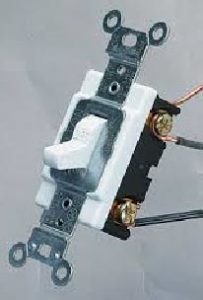
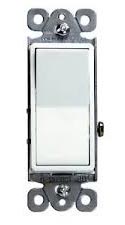
A switch which turns on one device, such as a light, from one location.
Transformer
An electro-magnetic device used to change the voltage in an alternating current electrical circuit.
Transformer - Distribution
A transformer that reduces voltage from the supply lines to a lower voltage needed for residential purposes.
Voltage
Or “volts”. The forcefulness with which current is ready to flow between two points.
Voltage can be present or fail to be present but electricity (current) cannot flow if voltage is lacking. However, even with voltage available, current will only flow if a continuous and conductive path is provided. Mathematically voltage is the “product” of current (amps) and resistance (ohms) in a circuit.
Wattage
Rate of electric energy used by lights or appliances. When applied to devices, it indicates the maximum watts the device is designed to deliver or control (rather than use).
Wattage is mathematically the product of current and voltage (amps times volts).
